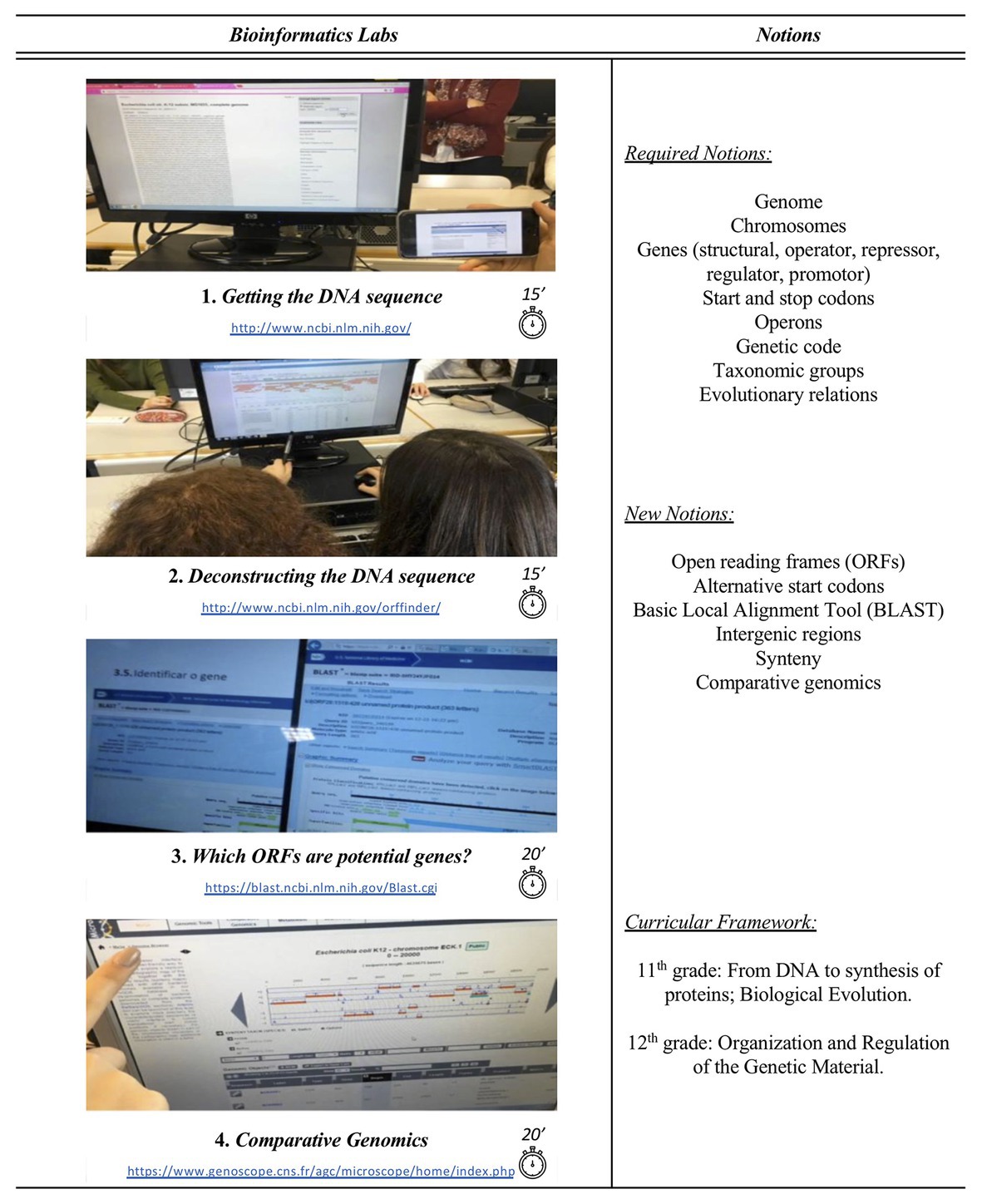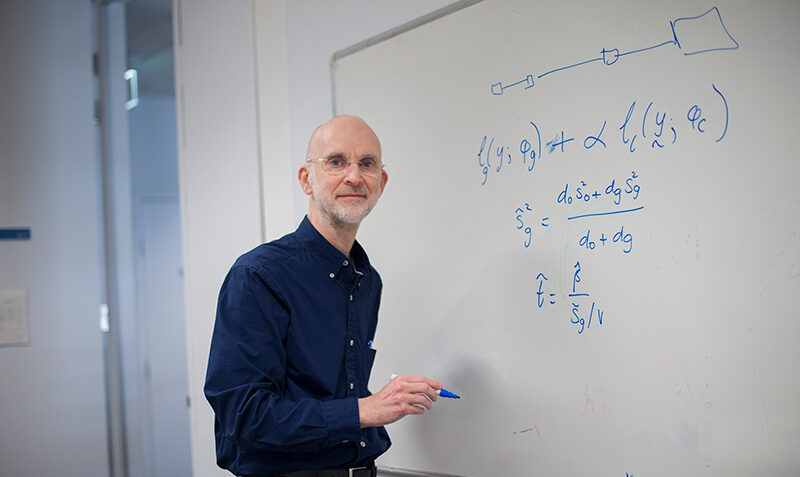Bioinformatics Tutor for Beginners
Bioinformatics Tutor for Beginners
Blog Article
Some Known Questions About Bioinformatics Tutor.
Table of ContentsBioinformatics Tutor Things To Know Before You Get ThisBioinformatics Tutor - The FactsLittle Known Facts About Bioinformatics Tutor.How Bioinformatics Tutor can Save You Time, Stress, and Money.Bioinformatics Tutor Fundamentals Explained
Of the overall individuals associated with the training, 80% were pupils from public greater education and learning organizations, while the continuing to be 20% came from exclusive institutions. To receive a certificate of engagement, pupils were required to participate in at the very least 90% of the total training hours. As an outcome of this need, an outstanding 95% of the participants effectively acquired their certificates, having not just met the minimum presence requirements however likewise finished all assigned tasks throughout the training.
Throughout the height of the COVID-19 pandemic, specifically in between June and August 2020, the project group was charged with organizing specialized training in bioinformatics. This training was especially targeted at trainees from the study team Nucleus for Research study in Applied Computing at the Federal College of Pará (UFRA) The adaptation to remote knowing platforms as a result of the pandemic created a chance to check out brand-new teaching methodologies and electronic tools that improved both reach and efficiency.
This program was created to offer an easily accessible yet detailed review of Artificial Intelligence techniques, specifically as applied in bioinformatics (Bioinformatics Tutor). This virtual layout made it possible for participation from students across Brazil, several of whom may not have had the possibility to participate in in-person sessions.
About Bioinformatics Tutor
A noteworthy attribute of this program was its emphasis on hands-on knowing. Approximately 50% of the overall training hours were dedicated to sensible activities where students built smart models and applications in a variety of scientific domain names, consisting of genes, molecular biology, and environmental information analysis. Widely utilized frameworks and tools such as Spyder, Google Colab, Jupyter Notebooks, and Orange were incorporated right into the coursework. These platforms made it possible for pupils to participate in real-time information control, version training, and formula trial and error.
The program drew in 80 individuals in total amount. Sixty of them were affiliated with numerous higher education and learning institutions in the state of Pará, while the staying twenty originated from organizations found in 5 various other Brazilian states. This broad geographical representation highlighted the nationwide passion in bioinformatics and the expanding need for specialized abilities in this location. By introducing Artificial Knowledge in a pertinent and practical context, the initiative served to bridge the void between concept and real-world application, offering students with a strong structure for future research study or employment in the field.
The training effort created part of a more comprehensive scholastic outreach effort called the Bioinformatics when traveling job. This task has, over the years, introduced dozens of pupils to the globe of bioinformatics and computational biology. The occasions held under this umbrella effort have actually occurred across several regions and years, as summed up in Table 1 (List of occasions, locations, years, and total numbers of trainees and trainers)
Among one of the most amazing outcomes of the Bioinformatics when driving campaign has been its payment to the development of decentralized research study groups. Several of these teams, initially combined by their participation in training events, have actually given that taken place to produce independent clinical study in cooperation with neighborhood scholastic establishments. The training not just promoted scientific thinking within the context of bioinformatics yet additionally sparked collaborative relationships that expanded past the training environment. These collaborations have caused increased neighborhood scientific performance and contributed meaningfully to the growth of the wider bioinformatics area in Brazil.
The Definitive Guide for Bioinformatics Tutor
The exact same team, omitting IH and RR, likewise acted as tutors for the functional training modules. Funding for the job was provided via the give 88887.200562/ 2018-00 from CAPES.
The Federal University of Pará's Workplace of Study (PROPESP/UFPA) likewise provided financial backing, specifically for the manufacturing of the final manuscript. The authors proclaim no commercial or economic disputes of interest that might have affected the research. Furthermore, all interpretations and opinions expressed in this short article are solely those of the writers and do not necessarily show those of their particular organizations, the author, editors, or reviewers entailed in the magazine procedure.

Some Ideas on Bioinformatics Tutor You Need To Know
From a pedagogical perspective, the teaching technique utilized in the training was purposefully interactive. check that Courses were performed in a fashion that encouraged trainee engagement and conversation, going beyond rote memorization to discover exactly how concepts are established, used in life, and evaluated in scholastic settings. The training ideology focused on nurturing both strong and struggling students, providing customized support, and building confidence with continual mentorship and perseverance.

Each team, being composed of about 36 participants, was supported by three coaches-- a lot of whom were postdoctoral scientists with customized proficiency. These advisors not only helped make the team jobs but likewise facilitated their implementation, guaranteeing that each research question was both properly tough and pertinent. The objective was to offer a naturally practical context that participants might explore with flexible goals and accessibility to curated datasets.
For extra insights right into the method and end results of this project-based understanding technique, visitors are guided to S1 Text, which consists of in-depth descriptions of the pedagogical framework, analysis techniques, and job styles utilized in the training sessions.
Our Bioinformatics Tutor Diaries
Of the overall individuals involved in the training, 80% were students from public higher education and learning institutions, while the remaining 20% came from private establishments. To certify website link for a certificate of participation, students were called for to go to at least 90% of the complete training hours. Notably, past the students that enlisted in the training sessions, 7 knowledgeable instructors got involved in providing the training courses, while 3 dedicated research teachers coordinated the overall training process. Roughly 50% of the complete training hours were dedicated to functional activities where pupils constructed smart versions and applications in a range of clinical domains, including genetics, molecular biology, and ecological data analysis. The training not just fostered scientific reasoning within the context of bioinformatics yet additionally stimulated collaborative partnerships that extended past the training atmosphere.
Report this page